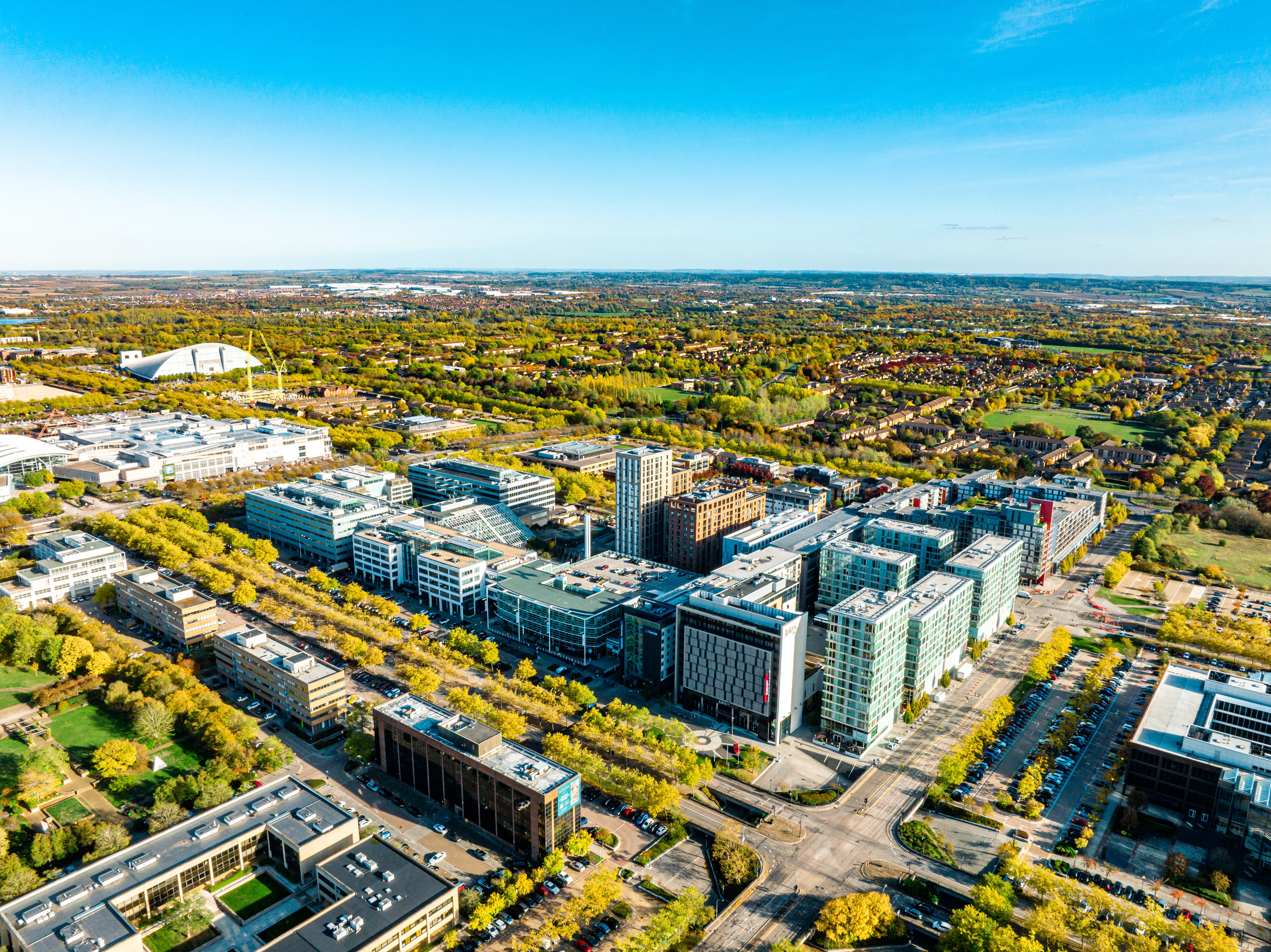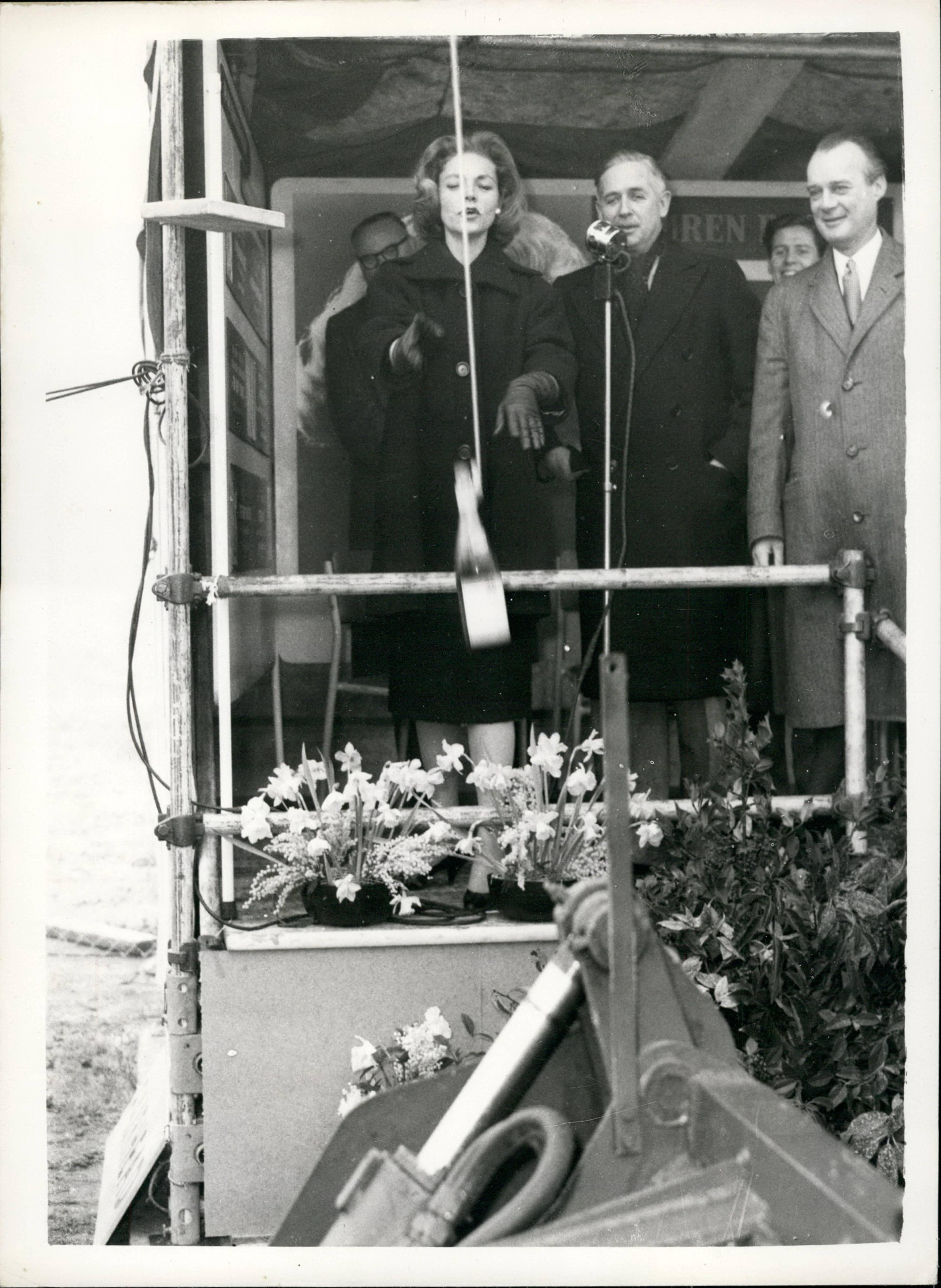New towns, old mistakes and why Starmer must think before building our future
With his promises of building 1.5 million homes and entire new towns, Keir Starmer is now a card-carrying, hard hat-wearing ‘yimby’. So what will Labour’s brave new world look like, asks Jonathan Glancey, and will it avoid the mistakes of the past?

We are the builders!” exclaimed Keir Starmer to the applause of Labour Party conference delegates. Well, good luck me old China, although it is not yet quite clear what hard hat, hi-vis jacket, hod-shouldering Starmer wants us to build.
“Britain will get its future back,” he says, and going back to the future – at the wheel of a Morris Minor perhaps – the Labour leader talks of a new wave of “new towns” built by state-backed companies served with an urban side dish of Georgian-style townhouses.
Starmer, we learned this week, is a self-professed “yimby” – yes in my backyard – although, short of commissioning a fashionable skinny New York-style apartment skyscraper in his back garden in Camden, he is unlikely to open the curtains of his bedroom window and be faced by some politically willed new housing development, affordable or not.
As for the big noise about building 1.5 million new homes in the first five years of a new Labour government, this works out at 300,000 a year which is what Winston Churchill’s incoming administration promised in 1951 and 100,000 less than Harold Wilson promised in Labour’s 1966 manifesto. This ambitious target was hit, although quantity triumphed over quality, and few will or should ever forget the fatal collapse of Ronan Point, a shoddy system-built east London tower block in 1968.

Under Clement Attlee’s post-war Labour government, the new towns were established, and whether with Tory or Labour in power, from Stevenage to Milton Keynes, and Washington to Cumbernauld, their populations grew. Short of building ever more sprawl or raiding the green – apologies, the “grey” – belt and shoehorning inappropriate and plain careless new houses into existing towns and villages, some form of new town may well be the way to go. There is, though, much to learn from the experience of the Labour new towns.
“Basildon”, declared Lewis Silkin, Attlee’s minister of town and country planning, at a meeting of residents in the old Essex town in September 1948, “will become a city which people from all over the world will want to visit”. And, yet, for all its charms – offices-on-stilts, artificial lakes, ambitious roundabouts, worthy public art and well-meant council estates – Basildon, one of the first 11 new towns announced in 1946, has failed, so far at least, to attract coach loads of globe-trotting tourists. Nor has it evolved into Silkin’s future city.
For Silkin and his generation of paternalistic socialists, new towns were to be places, in his words, where “all classes of community can meet freely together on equal terms and enjoy common cultural and recreational facilities”. In a new dawning of free teeth and specs on the national health, universal education, milk at playtime, Uncle Mac on the wireless, state-run trains, local-authority buses and full employment, new towns – free of class distinction, private property, private schools and whiffy drains – were seen by their advocates as physical expressions of a new socialist order.

Their plans, or layouts, were scientifically zoned, housing sited here away from light industry over there. This sector for commerce, that for culture. Those fields you see on the perimeter for healthy recreation. The Abercrombie Plan of 1944 had called for the displacement of 1.5 million Londoners alone to these new settlements inspired by the garden cities and garden suburbs dreamed up by the Esperanto-speaking Victorian idealist Ebenezer Howard.
More than a few new town pioneers succumbed to what the press dubbed “new town blues”. What must it have been like for a housewife stuck in a small if neat house with an apron of garden at the end of a quiet cul-de-sac, even with the promise of an agreeable Kenneth Clark-approved Henry Moore sculpture by the civic centre, when what she had known before was the chattering street life of Whitechapel, Bethnal Green or Dalston? Where was the raucous cheer, the colours and bright lamps of Ridley Road market? Where were the shopping-laden trams swaying along Mare Street? The coalman, knife-grinder, French onion seller and rag-and-bone man? Could a prim, and probably teetotal, new town architect design a decent London-style boozer?
With homes set a long way from anything like a recognisable town centre, no wonder many first-generation new towners felt out of sorts. Even with a galaxy of big telly and screen stars paid to open shops – Benny Hill, Frankie Vaughn and, I say, Terry Thomas, among them – and the smouldering presence of Lauren Bacall at the first night of Hemel Hempstead’s new cinema – new towns were no substitute for a home in easy reach of the West End.

The new towns and new estates of the “boomer” era raise the question, why were the British working and lower middle classes subject to experimentation and social engineering? One simple answer is that neither could they afford to live as the middle classes did in settled parts of towns and cities in elegant 18th-century houses or well-serviced blocks of modern flats, nor did they have the political clout to demand better homes than they were given. To their credit, new towns did attempt to curb sprawl, yet this has only grown since their creation a biblical lifetime ago and, of course, there are those who have only known them as home and will have nothing ill said of them.
We can, though, aim much higher. A new generation of new towns would need to be quite different, offering homes that are far more than dormitory “living units”. Future governments will need to help nurture real industry, proper jobs and futures in such developments together with a real sense of place and belonging. Houses themselves might be designed in wholly new styles if well-planned, well-built and well-sited unlike so much of the new, speciously “traditional” housing witnessed the length and breadth of Britain.
Starmer and his builders will need to encourage new standards in the design and construction of homes whether in new new towns or existing suburbs and town and city centres. Imagine if we had houses manufactured to the standards set by the aviation or even the motor industry? Why not? Cost most probably, but we need to figure out a way of creating better houses. They are, after all, our homes, our hearths, our hearts, not purely “products” and far more than simply “roofs over our heads”.

We might also want to think carefully about our national preoccupation with home ownership. Easier said than done, of course, yet our governments could look, for example, at Vienna where more than 60 per cent of the city’s 1.8 million inhabitants live in subsidised housing, with approximately half of the housing market comprising city-owned or cooperative flats. The high proportion of subsidised housing exerts a price-dampening effect on the private housing market and safeguards a social mix throughout the city. As the Viennese like to tell you, proudly, a person’s income or line of work cannot be gleaned from their home address.
The architecture of most of these city-centre homes is deeply impressive, much of it created between 1918 and 1934 when the Social Democratic Party of Austria held political sway. As built, these apartment blocks incorporated kindergartens, schools, shops, laundries, communal gardens and lending libraries. There were, and are, trams steps away from their grand entrances.
While we need many new homes, we must learn to think before we say “we are the builders” and get out our hods. If not, any potential future prime minister will be in danger of sounding, in retrospect, like Peter Sellers’s vacuous candidate at the hustings – the comedian’s “Party Political Broadcast” recorded in 1958 – when he opines: “We will build, but we will build surely.”
We need to promise ourselves a lot better than imprecise talk of unspecified new towns and Georgian-style houses and that well-rehearsed political rodomontade citing “300,000 homes a year.”
Jonathan Glancey is an architectural critic and writer
Join our commenting forum
Join thought-provoking conversations, follow other Independent readers and see their replies
Comments


Bookmark popover
Removed from bookmarks